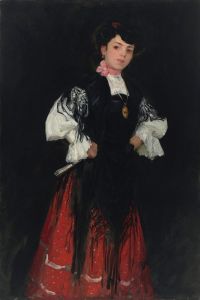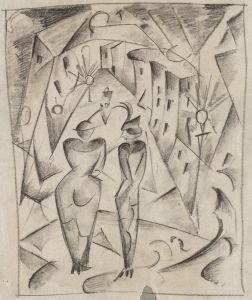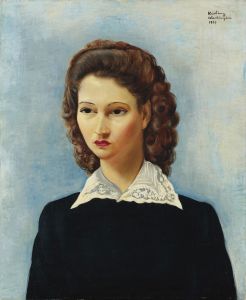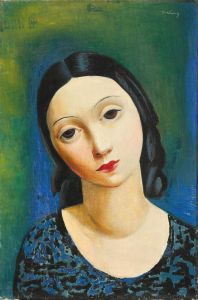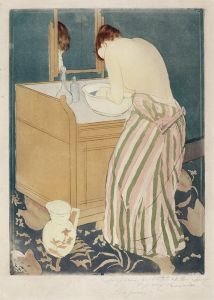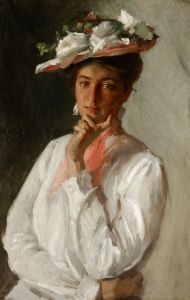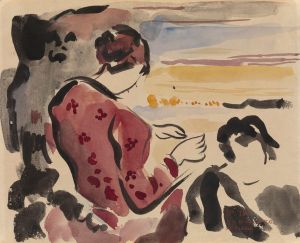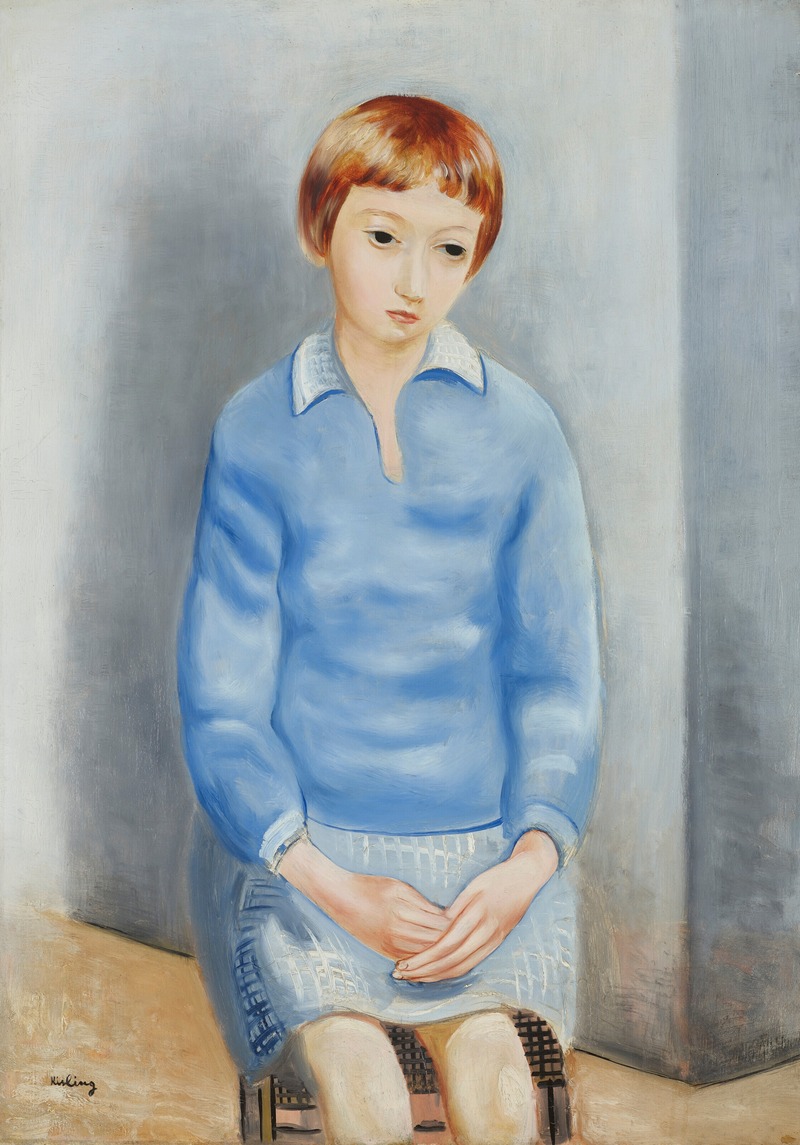
Portrait de Mademoiselle L. Michaux
A hand-painted replica of Moïse Kisling’s masterpiece Portrait de Mademoiselle L. Michaux, meticulously crafted by professional artists to capture the true essence of the original. Each piece is created with museum-quality canvas and rare mineral pigments, carefully painted by experienced artists with delicate brushstrokes and rich, layered colors to perfectly recreate the texture of the original artwork. Unlike machine-printed reproductions, this hand-painted version brings the painting to life, infused with the artist’s emotions and skill in every stroke. Whether for personal collection or home decoration, it instantly elevates the artistic atmosphere of any space.
Moïse Kisling, a Polish-born French painter, created the artwork "Portrait de Mademoiselle L. Michaux" during his prolific career in the early 20th century. Kisling was renowned for his distinctive style that combined elements of realism and modernism, often characterized by vibrant colors and bold outlines. He was part of the École de Paris, a group of immigrant artists who contributed significantly to the Parisian art scene.
Kisling was born on January 22, 1891, in Kraków, which was then part of the Austro-Hungarian Empire. He moved to Paris in 1910, where he became associated with the Montparnasse district, a hub for artists and intellectuals. During his time in Paris, Kisling developed friendships with notable artists such as Amedeo Modigliani, Marc Chagall, and Jules Pascin. These interactions influenced his artistic development and helped him establish a reputation within the art community.
The "Portrait de Mademoiselle L. Michaux" is an example of Kisling's portraiture, which often depicted women with elongated forms and expressive features. His portraits are noted for their psychological depth and the way they capture the essence of the sitter. While specific details about the subject, Mademoiselle L. Michaux, are scarce, it is evident that Kisling's portrayal is both intimate and respectful, reflecting his ability to convey personality and emotion through his art.
Kisling's technique involved the use of rich, saturated colors and a smooth application of paint, which gave his works a luminous quality. His portraits often featured a harmonious balance between the figure and the background, creating a sense of unity and focus on the subject. This approach is evident in the "Portrait de Mademoiselle L. Michaux," where the sitter's presence is both commanding and serene.
Throughout his career, Kisling's work was exhibited in numerous galleries and exhibitions, gaining him recognition and acclaim. His contributions to the art world were significant, and his works are held in high regard by collectors and art historians alike. Kisling's ability to blend traditional techniques with modernist sensibilities made his portraits distinctive and enduring.
Kisling's life was marked by the turbulence of the 20th century, including both World Wars. During World War II, he served in the French Foreign Legion and later moved to the United States to escape the Nazi occupation of France. He returned to France after the war and continued to paint until his death on April 29, 1953, in Sanary-sur-Mer, France.
Today, Moïse Kisling is remembered as a significant figure in the École de Paris and for his contributions to modern art. His portraits, including "Portrait de Mademoiselle L. Michaux," continue to be celebrated for their unique style and emotional depth. The painting exemplifies Kisling's mastery of color, form, and composition, making it a valuable piece in the study of early 20th-century art.






